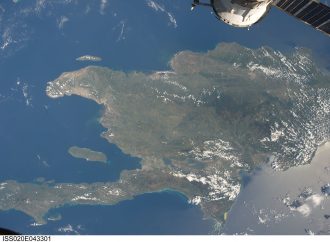In the New York Times last week, Tufts University’s Alex de Waal penned an op-ed that scathingly criticized the Responsibility to Protect (R2P) doctrine and a group of people he calls “idealists.” In the article, he identified only two members of this group: Gareth Evans (a former Australian foreign minister who co-chaired the commission that
In the New York Times last week, Tufts University’s Alex de Waal penned an op-ed that scathingly criticized the Responsibility to Protect (R2P) doctrine and a group of people he calls “idealists.” In the article, he identified only two members of this group: Gareth Evans (a former Australian foreign minister who co-chaired the commission that first proposed R2P) and Samantha Power (author of the Pulitzer Prize winning book “A Problem from Hell”: America and the Age of Genocide, who now works on the National Security Council staff in the Obama White House).
Evans, Power, and their “fellow idealists” misunderstand the nature of mass atrocities, de Waal argues. Instead of recognizing that skillfull diplomacy can, in some circumstances, achieve political solutions to large-scale violence, “idealists” tend to view perpetrators as insatiable killers who can be stopped only by sending in the cavalry against them. According to de Waal, this tendency to turn to military solutions for mass violence is naïvely moralistic and dangerous.
There is, however, one big flaw in de Waal’s account: he is misrepresenting R2P and many of its proponents. De Waal has been a critic of R2P for years. By now, therefore, he must know that the doctrine favours non-military over military responses. As Gareth Evans wrote in response to de Waal’s op-ed,
Of course it is preferable for political negotiations to stop mass violence before it burns out for want of further victims, if this can possibly be achieved. That is exactly what Kofi Annan did in Kenya in early 2008, while invoking the “R2P” norm, and what he is trying to achieve now in Syria… The whole point of the R2P doctrine is simply to generate a reflex international response that occurring or imminent mass atrocities are everybody’s business, not nobody’s. What the appropriate response can and should be — including diplomatic persuasion, non-military pressure like sanctions or International Criminal Court action, or (in extreme and exceptional cases) military intervention — depends entirely on the circumstances of each individual case.
The paradox, then, is that while de Waal criticizes “idealists” for oversimplifying complex conflicts and demonizing instead of engaging with perpetrators of violence, he himself presents R2P in distortedly simplified terms. Indeed, based on his op-ed and previous writing, he seems to want to demolish R2P rather than to engage with elements of the doctrine that are consistent with his own “pragmatic” approaches to conflict resolution. Kofi Annan’s current shuttle diplomacy in Syria, for example, is simultaneously an illustration of R2P in practice and an example of the negotiated approach that de Waal prefers.
It is true that R2P countenances the possibility of outside military intervention in extremis — if non-military methods fail and mass killing looms or is underway. However, nothing makes intervention automatic, even under these circumstances. It is worth recalling the R2P principles set out in the 2001 report of the commission that Evans co-chaired, which stated not only that military intervention may be used only as a last resort, but also that,
There must be a reasonable chance of success in halting or averting the suffering which has justified the intervention, with the consequences of action not likely to be worse than the consequences of inaction.
In other words, even in the face of mass atrocities when all other attempts to end violence have failed, military intervention is not warranted if it is likely to make the situation worse.
This important prudential warning at the heart of R2P is too often forgotten by the doctrine’s critics and proponents alike. R2P is not an automatic licence for military intervention. Any contemplated armed action must be justified, necessary, proportional — and expected to do more good than harm.
On the other hand, de Waal is quite sensible when he warns advocates of military intervention about the danger of forgetting “to ask important questions about what they want to achieve and how.” That is excellent advice — and it should be a central part of the calculation of whether an intervention is likely to result in conditions that are better than those which otherwise would exist if no intervention occurred.
This is also a consideration we must keep in mind in deciding how to respond to the Syrian regime’s current violence against its own people. The images and stories emerging from Syria are heart-wrenching and horrifying. At this time, however, it is not clear that outside military intervention would succeed in making conditions for Syrian civilians better, not worse. Given the capabilities of the Syrian armed forces, an intervention aimed at creating safe havens, enclaves, or protected corridors would likely entail — and therefore require planning for — a full-scale war to defeat the Syrian regime.
This is difficult news to swallow, not least because it leaves many feeling frustrated by the apparent lack of decisive options to save Syrian lives here and now, other than continuing to pursue even more assertive diplomatic efforts to pressure the Syrian government and its supporters. This is the unfortunate situation we are currently facing — as I have attempted to explain elsewhere — although circumstances may change and military options may become more viable.
The broader point is this: contrary to de Waal’s caricature, one of the “responsibilities” in the R2P doctrine is actually that of prudence. Nothing in the R2P principles legitimizes, or excuses, military recklessness.
This post first appeared on the CIC’s Roundtable blog at opencanada.org.









